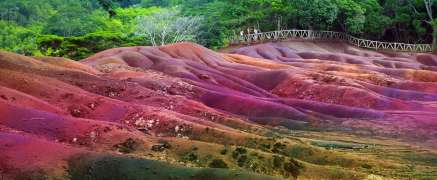The smallest coffee producer in the world.
- In addition to the Arabica coffee introduced during colonization, there are wild growing Coffea species:
- C. mauritiana: also called Café maron, rarely grows in Mauritius.
- C. macrocarpa: a small shrub with thick leaves and elongated very large coffee cherries.
- C. bernardiniana
- C. myrtifolia: 7-8 tall shrubs with small leaves.
- The Chamarel coffee bushes were introduced by French settlers over 200 years ago.
- Since 1967, Café de Chamarel is the only coffee grown in Mauritius.
- The Arabica coffee in Mauritius grow on 280 m altitude in the southwest of the island on the volcanic soil together with bananas, pineapple, lychees, papaya and Co.
- Pesticides are not used.
- Only coffee cherries with optimal ripeness are harvested by hand from May to September and wet-processed
- The annual production of the 16 ha of cultivated land is equivalent to 10,000 tons coffee.
- After drying, the coffee is roasted on site by 2 roasters at 180 °C to 200 °C.
- The coffee is balanced with aromas of cocoa and citrus notes.
- Café de Chamarel is produced almost exclusively for its own use on Mauritius.
- However, green coffee is also imported from countries such as Brazil, Colombia and Mexico, roasted and sold, such as Café la Fournaise.
Preparation
The largest population of Hindus prefer their sweet, milky tea, as well as the Creoles and Chinese. The Francos swear by their coffee.
Coffee is usually drunk Turkish – hot water is poured over the ground coffee in the cup. Then you wait until the coffee grounds have settled before you drink it.


